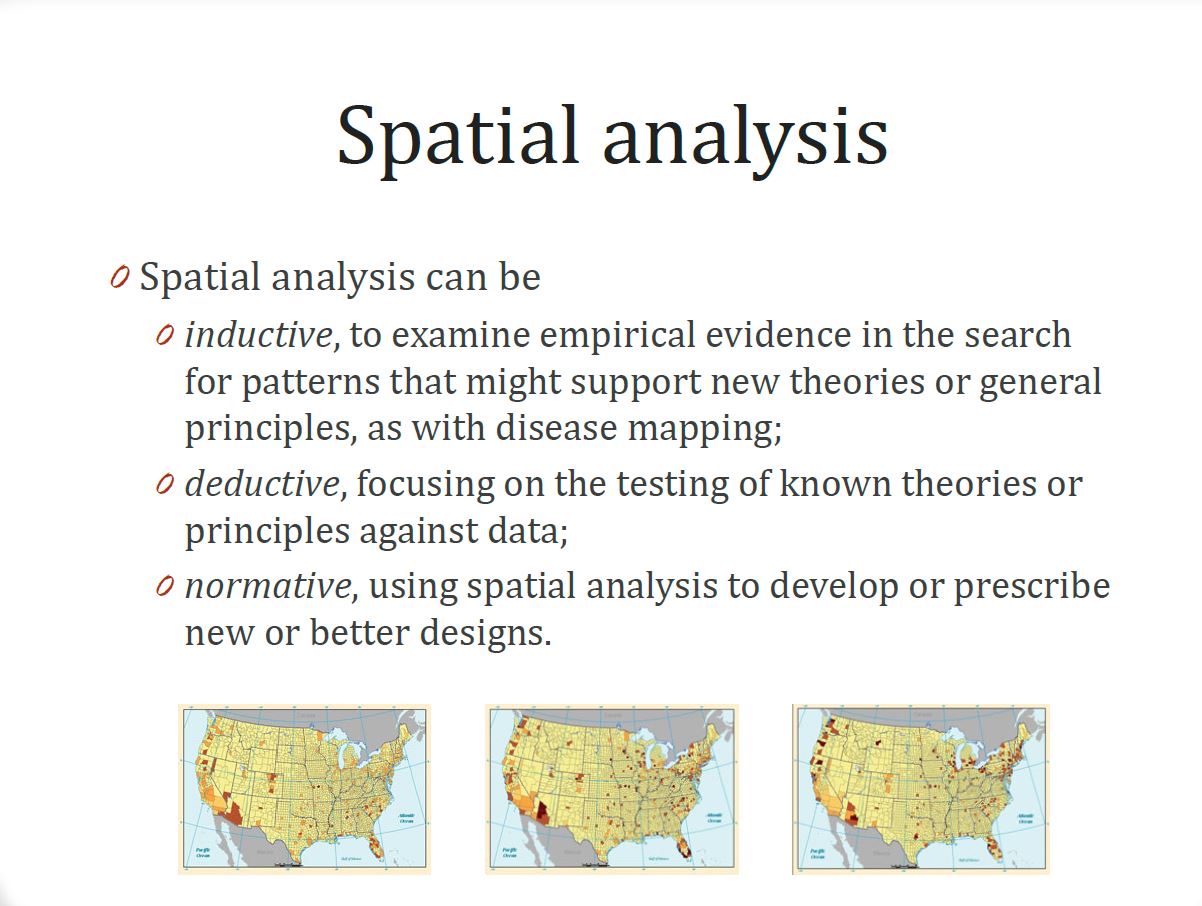
Spatial analysis is a fascinating field that combines geography, data analysis, and technology to unravel hidden patterns and relationships within our world. It involves the use of geographic information systems (GIS) to gather, interpret, and visualize geographical data, allowing us to gain valuable insights into various phenomena. Whether it’s studying population distribution, urban planning, natural resource management, or even crime mapping, spatial analysis plays a crucial role in understanding the complex intricacies of our planet.
In this article, we delve into 19 intriguing facts about spatial analysis that showcase its significance and impact in various fields. From uncovering hidden spatial trends to facilitating informed decision-making, spatial analysis not only enhances our understanding of geographical data but also helps us tackle complex real-world problems effectively. So, prepare to embark on a journey through the captivating world of spatial analysis, where the intersection of geography and data reveals endless possibilities.
Key Takeaways:
- Spatial analysis helps us understand patterns in geography and makes it easier to solve complex problems like planning cities and managing natural disasters. It’s like a superpower for making smart decisions about our world!
- By using spatial analysis, we can predict future trends, map crime, protect the environment, and even plan where to put new stores. It’s like having a secret map to help make the world a better place!
Spatial analysis is a key component of geographic information systems (GIS).
Spatial analysis involves examining patterns and relationships within geographic data to gain insights and make informed decisions.
It helps in understanding spatial patterns and trends.
Spatial analysis allows us to uncover patterns and trends that may not be apparent at first glance. It helps in identifying clusters, hotspots, and other spatial relationships.
It can be used to solve complex problems.
By analyzing spatial data, researchers and analysts can address complex problems such as urban planning, disaster management, and environmental conservation.
Spatial analysis is used in various industries.
From healthcare to transportation, spatial analysis plays a vital role in industries that rely on geographic information. It helps in optimizing routes, identifying suitable locations, and improving resource allocation.
Geospatial data is the backbone of spatial analysis.
Accurate and up-to-date geospatial data is essential for effective spatial analysis. It includes information such as coordinates, boundaries, and attributes that are used to analyze and visualize geographic phenomena.
It employs various techniques and tools.
Spatial analysis utilizes a wide range of techniques and tools, including spatial statistics, overlay analysis, network analysis, and geocoding.
Remote sensing plays a crucial role in spatial analysis.
Remote sensing data, obtained from satellites and aerial platforms, is used to collect information about the Earth’s surface. It is often used in conjunction with spatial analysis to monitor land use, detect changes, and analyze vegetation patterns.
Spatial analysis helps in predicting and understanding spatial trends.
By analyzing historical data and applying statistical models, spatial analysis can help in predicting future spatial trends, such as population growth, urban expansion, and traffic patterns.
It can uncover hidden relationships between variables.
Spatial analysis enables the identification of relationships and dependencies between variables that may not be evident in traditional statistical analysis. It helps in identifying spatial autocorrelation and spatial outliers.
Spatial analysis is used in crime mapping and analysis.
Law enforcement agencies use spatial analysis to map crime incidents, identify crime patterns, and allocate resources effectively. It helps in understanding the spatial distribution of crime and identifying high-risk areas.
It aids in natural resource management.
Spatial analysis is employed in natural resource management to assess land suitability, monitor biodiversity, and analyze the impact of human activities on ecosystems.
Spatial analysis can be used for route optimization.
By analyzing spatial data, businesses and logistics companies can optimize routes for delivery services, reducing costs and improving efficiency.
It plays a role in public health planning.
Spatial analysis helps in understanding the distribution of health-related phenomena, such as disease outbreaks, healthcare access, and environmental factors affecting public health.
Spatial analysis is used in disaster management.
During natural disasters, spatial analysis is crucial for emergency response and recovery efforts. It helps in identifying vulnerable areas, assessing damage, and planning evacuation routes.
It supports environmental conservation efforts.
Spatial analysis helps in identifying critical habitats, analyzing deforestation patterns, and planning conservation areas. It aids in making informed decisions for sustainable natural resource management.
Spatial analysis is used in market research.
Businesses use spatial analysis to identify target markets, analyze consumer behaviors, and determine optimal locations for retail stores and franchises.
It assists in urban planning and infrastructure development.
Spatial analysis helps urban planners in determining suitable locations for infrastructure projects, analyzing transportation networks, and managing urban growth.
Spatial analysis helps in understanding human mobility patterns.
By analyzing spatial data from mobile devices and social media, researchers can gain insights into human movement, commuting patterns, and tourist flows.
It contributes to evidence-based decision making.
Spatial analysis provides a scientific and data-driven approach to decision making. It helps policymakers, researchers, and organizations make informed choices based on reliable spatial data and analysis.
These 19 intriguing facts about spatial analysis demonstrate its importance and widespread applications in various fields. From urban planning to environmental conservation, spatial analysis plays a vital role in understanding and making decisions about our complex and interconnected world.
FAQs
1. What is spatial analysis?
Spatial analysis is a process of examining data and patterns related to geographic locations. It involves studying relationships, patterns, and trends within a specific geographical area to gain insights and make informed decisions. This technique utilizes various tools and technologies to analyze geographic data and derive meaningful conclusions.
2. How is spatial analysis used?
Spatial analysis has a wide range of applications across various industries. It is used in urban planning to analyze population density and design efficient transportation systems. It is also used in environmental science to study the impact of natural disasters and conservation efforts. Additionally, spatial analysis is used in business for market research, site selection, and optimizing supply chain networks.
3. What are some key benefits of spatial analysis?
Spatial analysis provides several benefits, including improved decision making, enhanced resource allocation, and better understanding of complex phenomena. It allows businesses and organizations to optimize their operations, identify patterns and trends, and gain a competitive advantage. Spatial analysis also helps in identifying geographic hotspots, planning for disaster management, and understanding human behavior in relation to their environment.
4. What tools are commonly used in spatial analysis?
There are several tools and software used in spatial analysis, such as Geographic Information Systems (GIS), remote sensing, and data visualization tools. GIS software like ArcGIS and QGIS are widely used for spatial data management and analysis. Remote sensing technology, including satellite imagery and aerial photography, provides valuable data for studying landscapes and monitoring changes over time.
5. How can businesses benefit from spatial analysis?
Businesses can leverage spatial analysis to gain insights into their target markets, identify customer demographics, and optimize their sales territories. It helps in determining the most profitable locations for retail outlets, analyzing customer movement patterns, and identifying areas with high demand. Spatial analysis also enables businesses to visualize their data on maps, making it easier to identify patterns and make data-driven decisions.
Was this page helpful?
Our commitment to delivering trustworthy and engaging content is at the heart of what we do. Each fact on our site is contributed by real users like you, bringing a wealth of diverse insights and information. To ensure the highest standards of accuracy and reliability, our dedicated editors meticulously review each submission. This process guarantees that the facts we share are not only fascinating but also credible. Trust in our commitment to quality and authenticity as you explore and learn with us.


